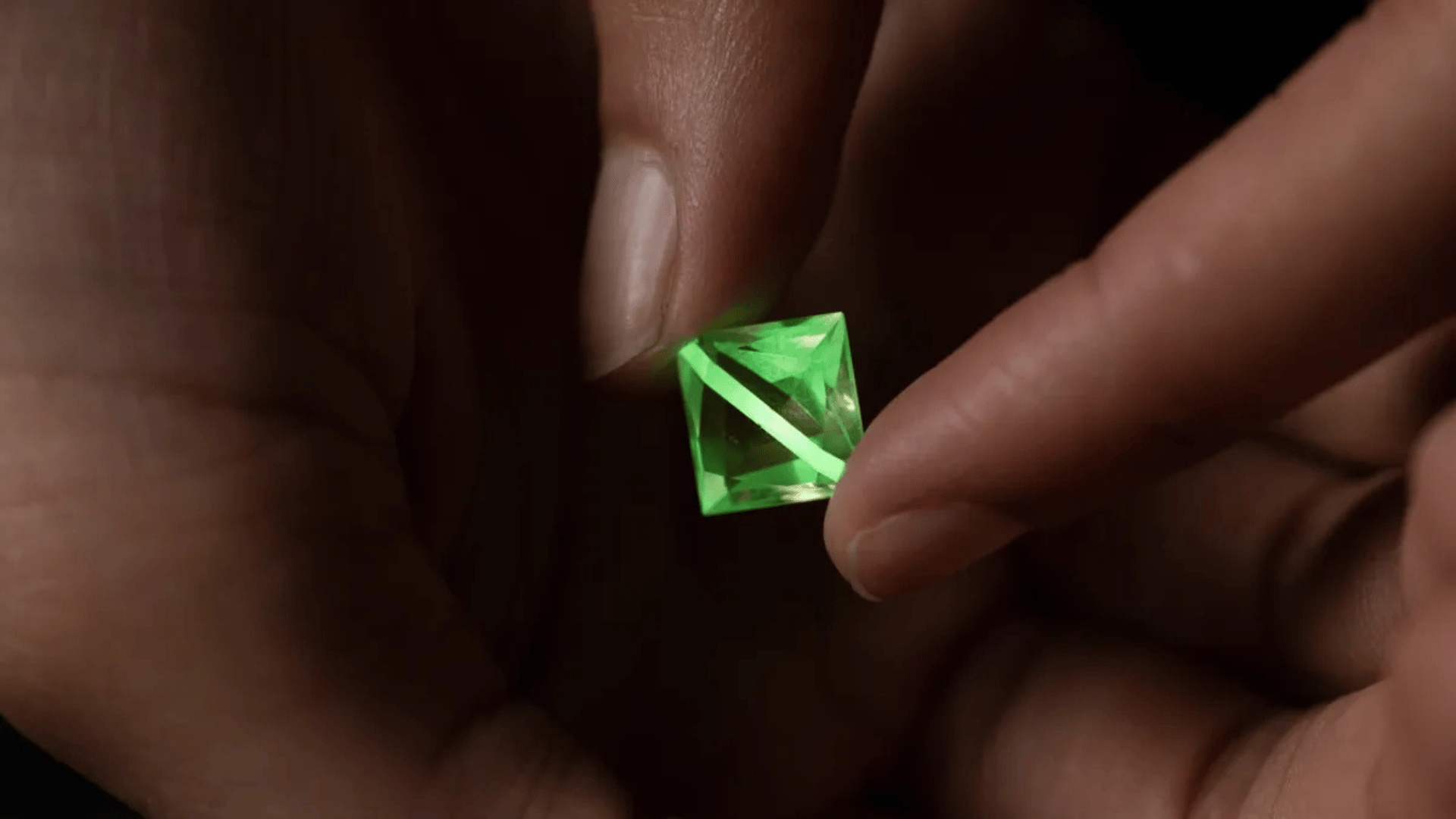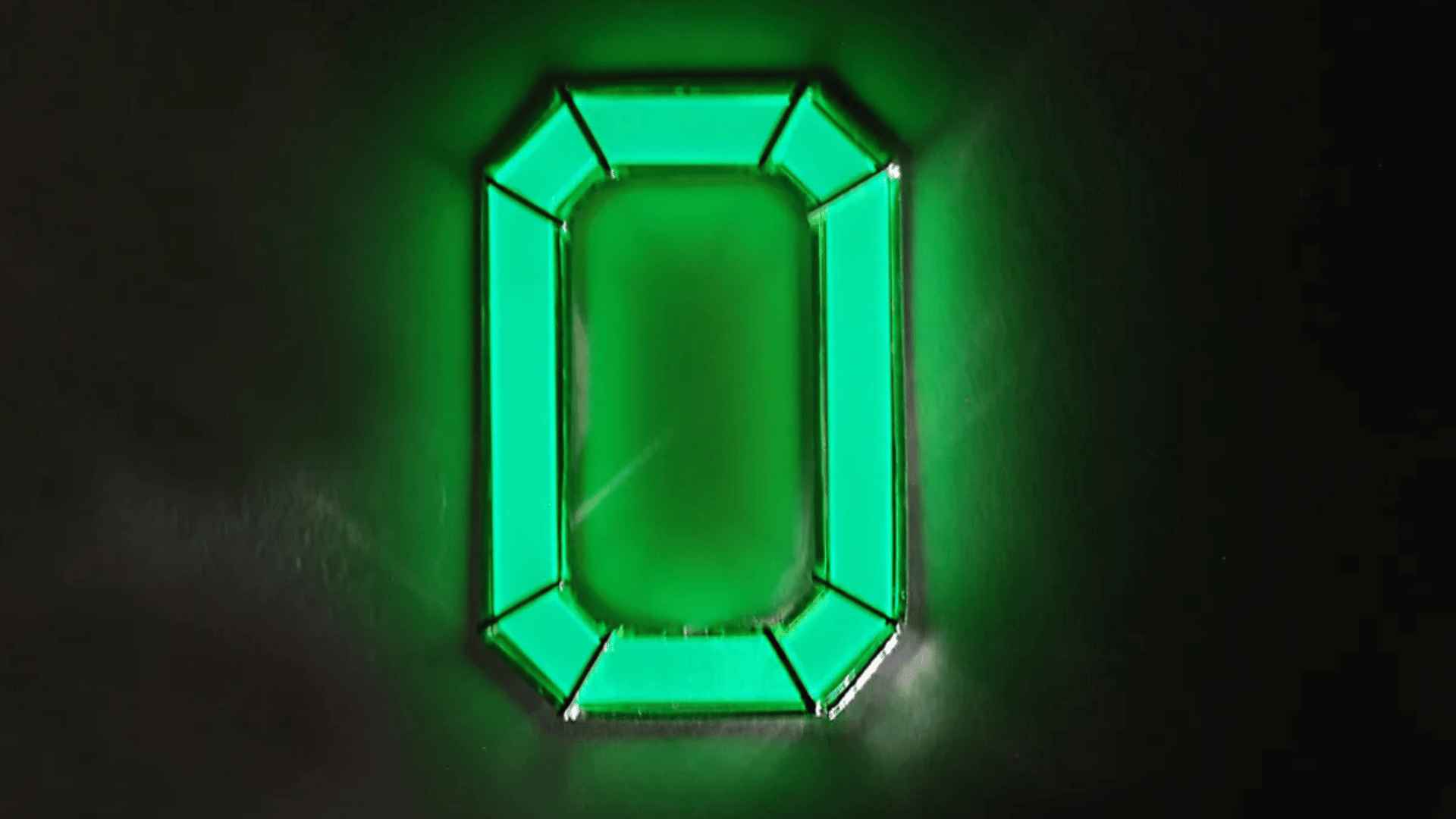Jeweler-turned-scientist Sofie Boons of the University of the West of England (UWE) created the world’s first single stone lab-grown crystal that can glow in the dark.

The glowing crystal is part of a years-long project by the award-winning jewelry designer into the viability and possible uses of experimentally grown crystals in contemporary jewelry. One of her previous experiments resulted in the creation of the first ruby to be grown from a “ruby seed” in a platinum ring made from industry waste products.
Boons collaborated with Swiss company BREVALOR Sarl and created the crystal using their new material, “BRG,” to craft the single stone. The creation of BRG crystals is similar to the production of silicon crystals, and their glowing effects are due to the Eu²+ ions introduced into the crystal matrix and two so-called traps related to Dy³+ and Nd³+, which allow them to store the light for a period of time.
Phosphorescent materials encountered day-to-day are typically based on pigments embedded in non-transparent substances such as plastics, lacquers, paints, or other support materials. With the new single crystals, new design effects based on three-dimensional transparent volumes can be used, enabling the use of an internal light source that needs only a brief activation by daylight.

Once activated, the energy absorbed will cause the material’s atoms to enter an excited and unstable state. For the material to return to an unexcited state, it undergoes a transition that involves re-emitting light for a period of time, also referred to as the luminescence efficiency.
“Earlier studies have identified that art and technology can influence each other, not standing in opposition, but inspiring each other. There is some catching up to be done when it comes to the technology of crystal growth and enabling artistic influence on it. My research only marks the beginning of an exciting journey in which lab-grown crystals are used to innovate within a jewelry and wider creative context… Ultimately, it is my goal to launch an artistic crystal growth hub where crystal growers and artists collaborate, to work on more sustainable and innovative crystal materials, for the creation of pigments, glazes, enamels (all small crystals), and of course gemstones.” said Boons to IFL Science.
Boons also stated that the current designs’ visibility in the dark can last 24 hours and decrease in intensity slowly over time. Boons’ research in lab-grown gemstones will be on exhibition in the Bower Ashton Campus at UWE from November 28 until December 3.







